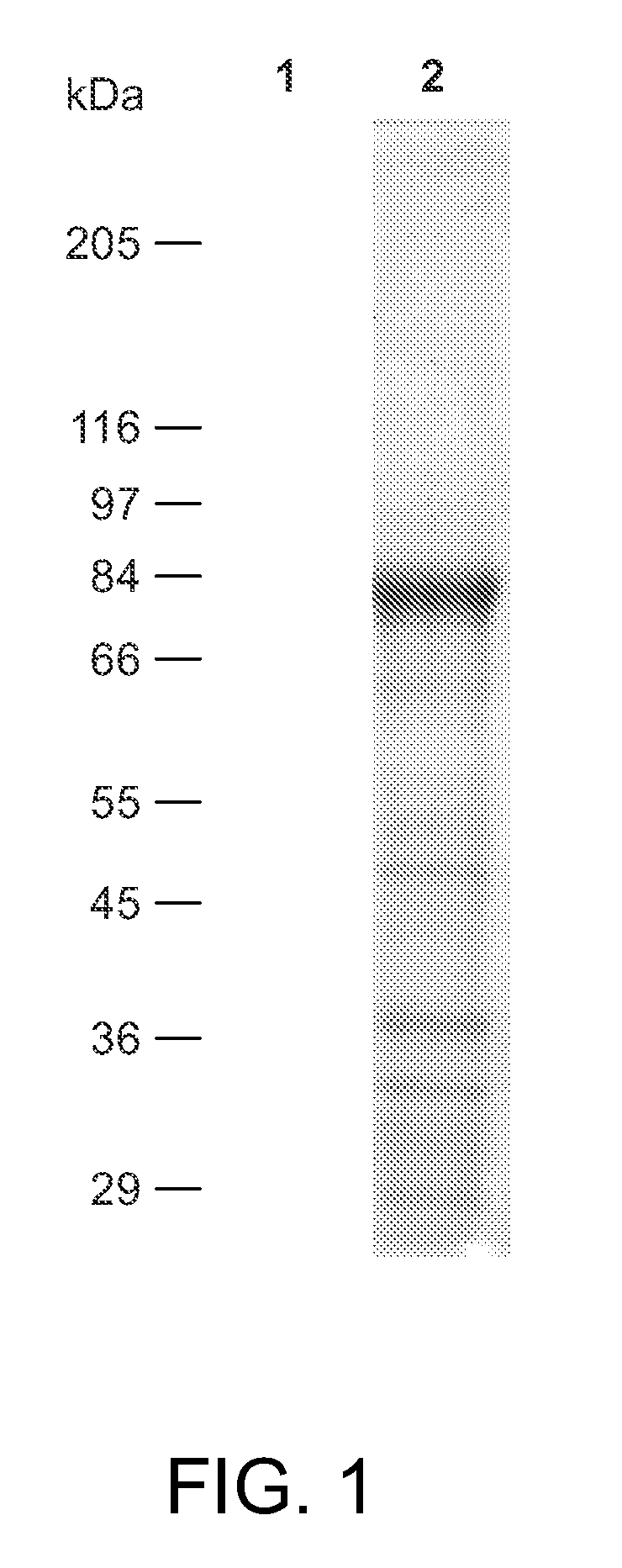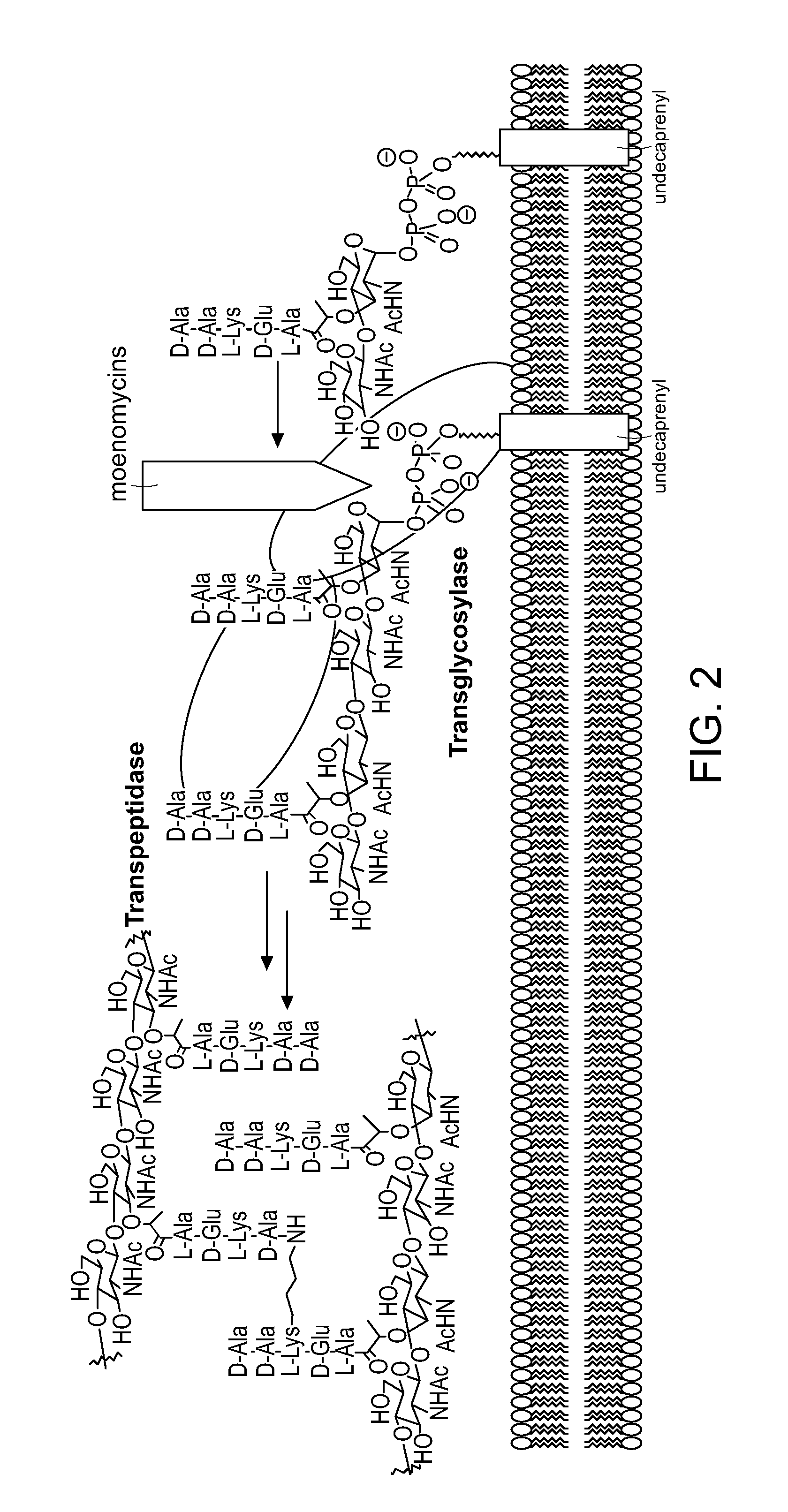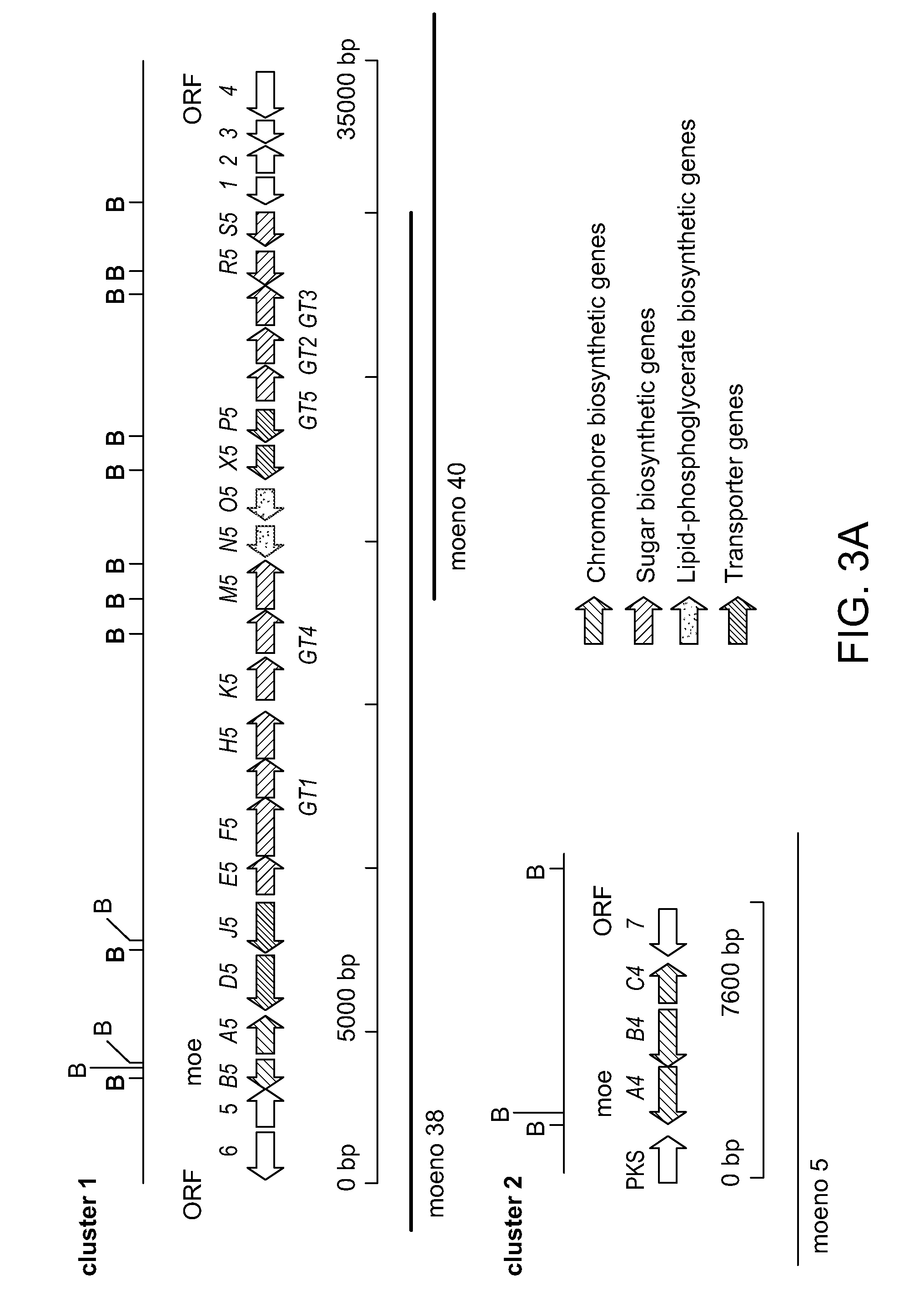Moenomycin analogs, methods of synthesis, and uses thereof
- Summary
- Abstract
- Description
- Claims
- Application Information
AI Technical Summary
Benefits of technology
Problems solved by technology
Method used
Image
Examples
example 1
Degradation and Reconstruction of Moenomycin A and Derivatives: Dissecting the Function of the Isoprenoid Chain
[0395]This Examples describes a degradation / reconstruction route to manipulate the reducing end of moenomycin A. We evaluate the enzyme inhibitory activity of moenomycin A and an analog containing a nerol chain against membrane-free TGases from the clinically relevant pathogens Staphylococcus aureus and vancomycin-resistant Enterococcus faecalis. This work provides insight into the different structural requirements for TGase inhibition and biological activities.
[0396]Moenomycin A was extracted and purified from feed stock flavomycin® and fully protected by sequential acetylation of hydroxyls followed by esterification of the acids on the phosphoglycerate moiety. The glycidyl ether linkage was then cleaved by treatment with TMSOTf to produce 2. Workup in the presence of saturated sodium bicarbonate produced the desired anomeric lactol 3 in 75% yield, presumably via ejection ...
example
(I-d)
Characterization of Compound (5)
[0430]
[0431]1H NMR (CDCl3, 500 MHz): δ 5.20-5.24 (m, H7, 1H), 5.12-5.16 (m, H11, 1H,), 4.74 (br. s, H16, 2H), 3.28 (s, H1, 2H,), 2.75 (d, J=7.0 Hz, H6, 2H), 1.96-2.14 (m, H4, H9, H10, 6H), 1.72 (s, H15, 3H), 1.65 (s, H13, 3H), 1.64 (s, H14, 3H), 1.37-1.41 (m, H3, 2H), 0.92 (s, 3× (CH3)3CSi, 9H,), 0.87 (s, H17, H18, 6H), 0.06 (s, (CH3)2Si, 6H); 13C NMR (CDCl3, 125 MHz) δ 150.5, 136.6, 131.6, 124.6, 122.3, 108.6, 71.7, 40.0, 37.4, 35.4, 35.2, 30.9, 26.9, 26.2, 26.0, 24.3, 18.5, 17.9, 16.2, −5.3; HRFABMS calcd for C24H47OSi [M+H]+379.3396, found 379.3396.
Example (I-e)
Synthesis of (R)-3-(3,4-Dimethoxybenzyloxy)-1-triisopropylsiloxy-2-propanol (7)
[0432]
[0433]To a mixture of racemic 2,3-epoxy-1-[(triisopropylsilyl)oxy]propane prepared by literature method1 (2.30 g, 10.0 mmol) and 3,4-dimethoxy benzyl alcohol (0.73 mL, 5.0 mmol) in CH3CN (4 ml) at 4° C. was added (R,R)-20 (1.6 mg, 0.02 mmol) in one portion.
[0434]After being stirred 24 h at 4° C., the re...
example i-m
Characterization of (R)-3-(3,4-Dimethoxybenzyloxy)-1-triisopropylsiloxy-2-[2-(Z)-3,7 -dimethyl-octa-2,6-dien-1-yloxy]-propane (12.2)
[0461]
[0462]1H NMR (500 MHz, CDCl3): 6.80-6.89 (m, Ar—H, 3H), 5.36 (t, I-2, J1,2=6.9 Hz, 1H), 5.06 (m, I-6, 1H), 4.51 (d, benzylic-H, Jgem=11.7 Hz, 1H), 4.46 (d, benzylic-H, Jgem=11.7 Hz, 1H), 4.15 (d, I-1, J1,2=6.9 Hz, 2H), 3.87 (s, 2×OMe, 6H), 3.71-3.77 (m, H-1, 2H), 3.62 (dd, H-3, J2,3=3.9. Hz, J3,3′=9.8 Hz, 1H), 3.56-3.60 (m, H-2, 1H), 3.50 (dd, H-3′ J2,3′=5.3 Hz, J3,3′=9.7 Hz, 1H), 2.02-2.08 (m, I-4, I-4′, I-5, I-5′, 4H), 1.72 (s, I-10, 3H), 1.66 (s, I-8, 3H), 1.58 (s, I-9, 3H), 1.04-1.10 (Si(i-Pr)3, 21H); 13C NMR (125 MHz, CDCl3): 148.91, 148.42, 139.83, 131.80, 131.06, 123.88, 122.41, 120.15, 110.93, 110.76, 78.77, 73.25, 70.12, 66.65, 63.26, 55.88, 55.72, 32.27, 26.73, 25.67, 23.49, 17.96, 17.63, 11.88; HRMS (ESI) calcd for C31H58NO5Si [M+NH4]+552.4084, found 552.4095; LRMS (ESI) calcd for C31H54O5SiNa [M+Na]+557.4, found 557.3.
PUM
| Property | Measurement | Unit |
|---|---|---|
| Composition | aaaaa | aaaaa |
Abstract
Description
Claims
Application Information
 Login to View More
Login to View More - R&D
- Intellectual Property
- Life Sciences
- Materials
- Tech Scout
- Unparalleled Data Quality
- Higher Quality Content
- 60% Fewer Hallucinations
Browse by: Latest US Patents, China's latest patents, Technical Efficacy Thesaurus, Application Domain, Technology Topic, Popular Technical Reports.
© 2025 PatSnap. All rights reserved.Legal|Privacy policy|Modern Slavery Act Transparency Statement|Sitemap|About US| Contact US: help@patsnap.com



